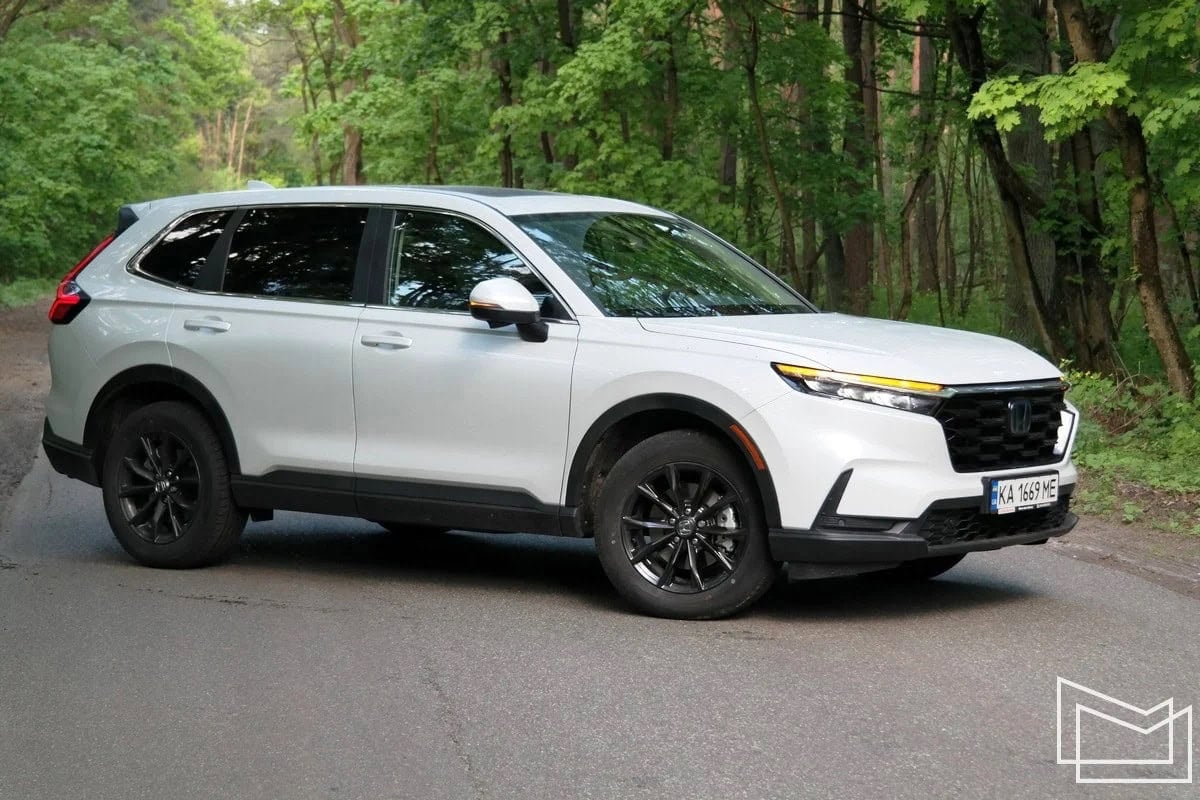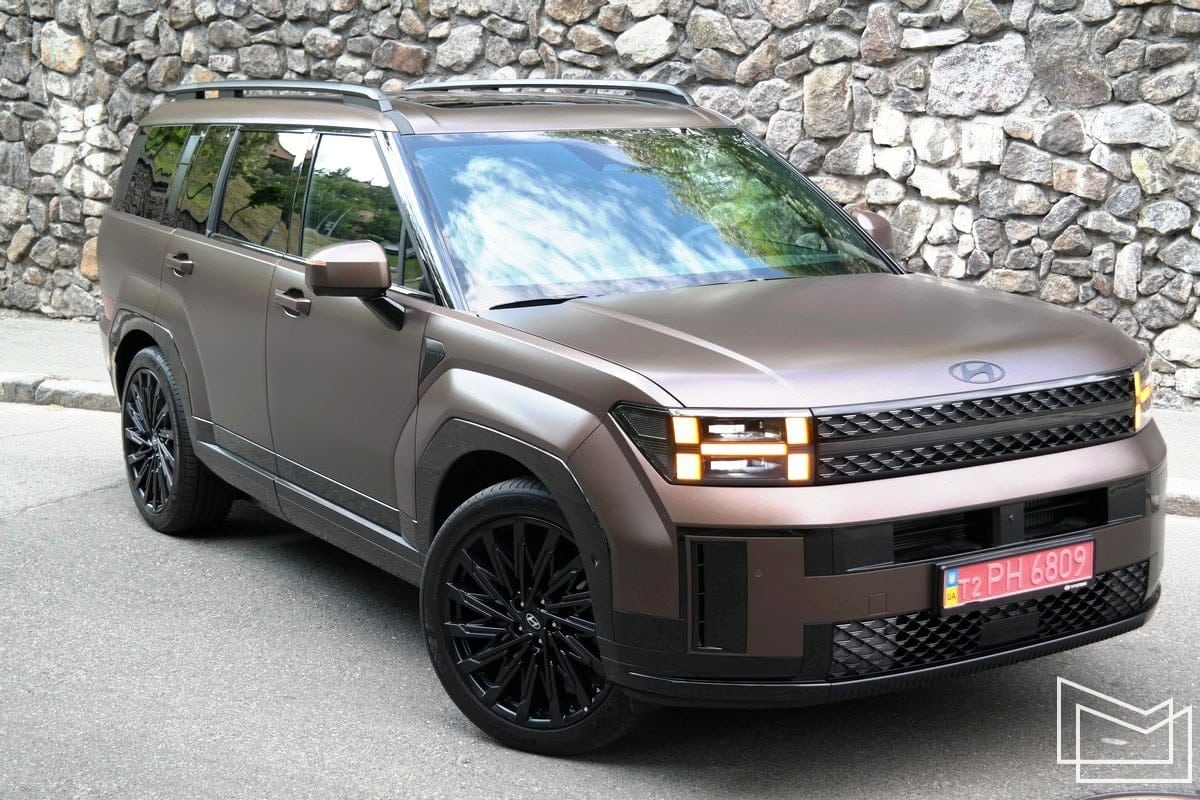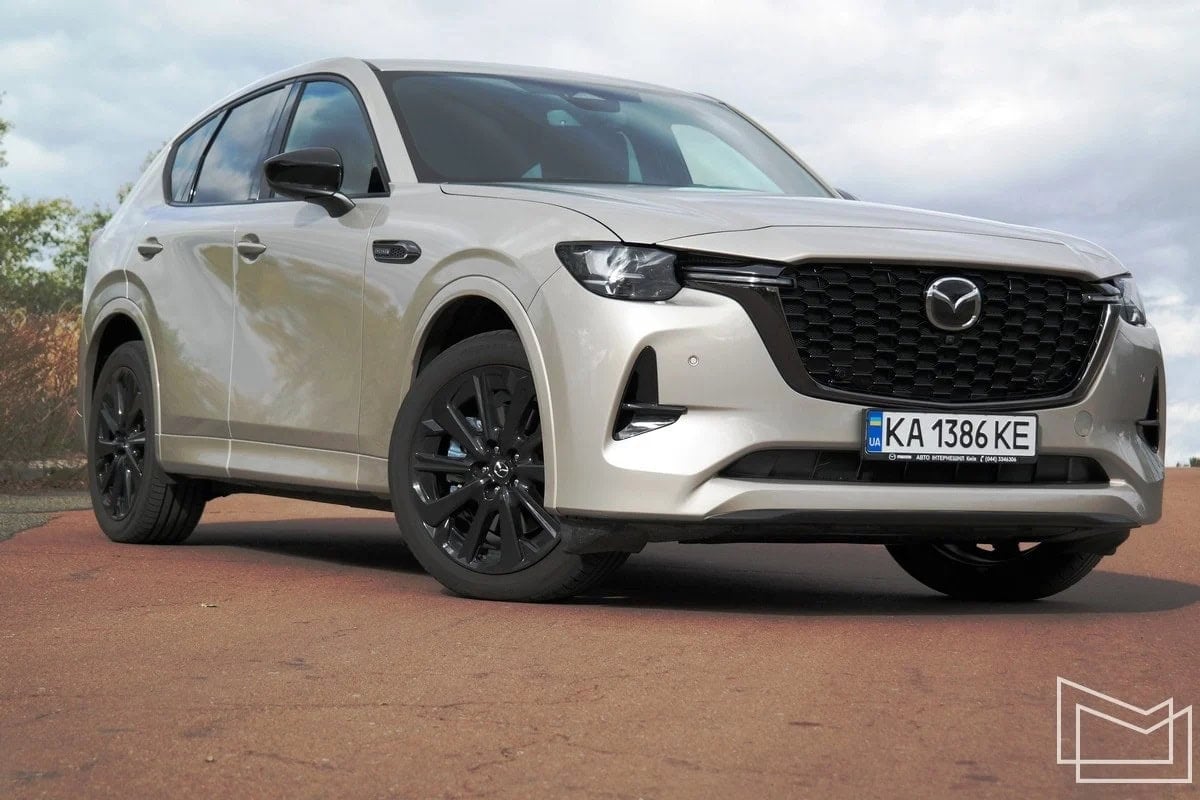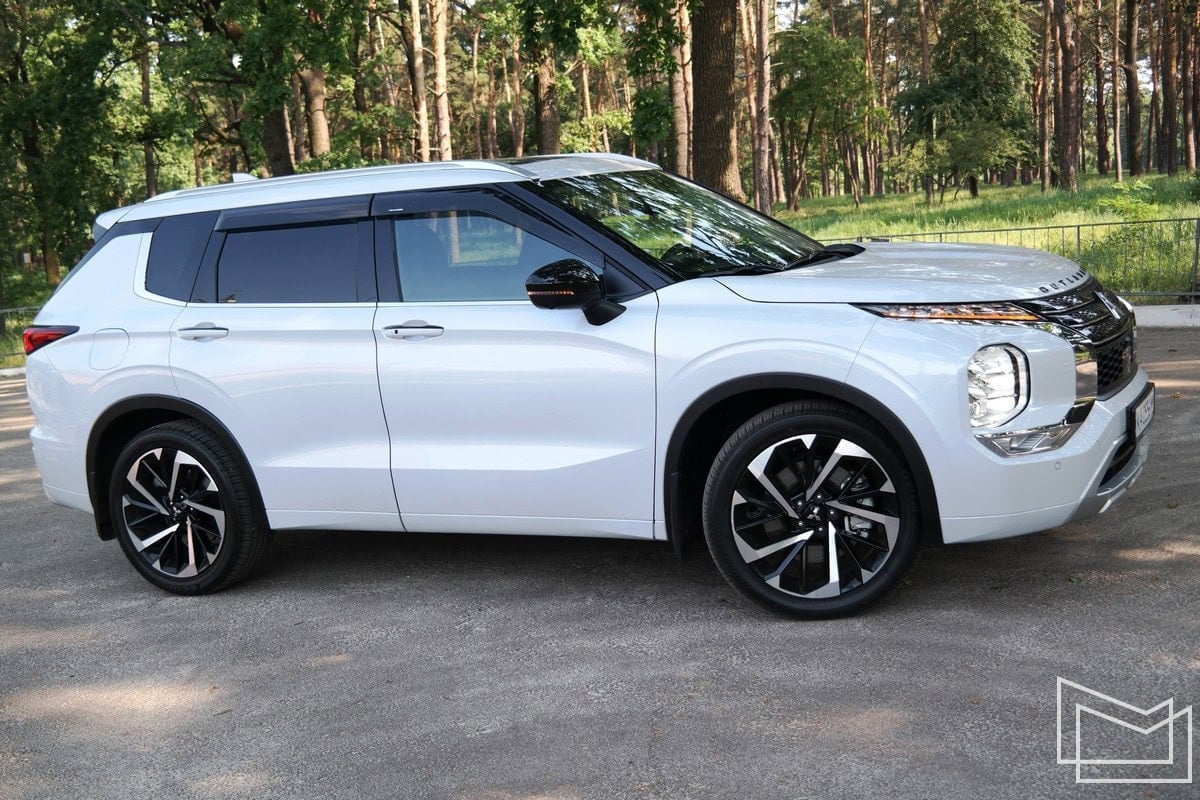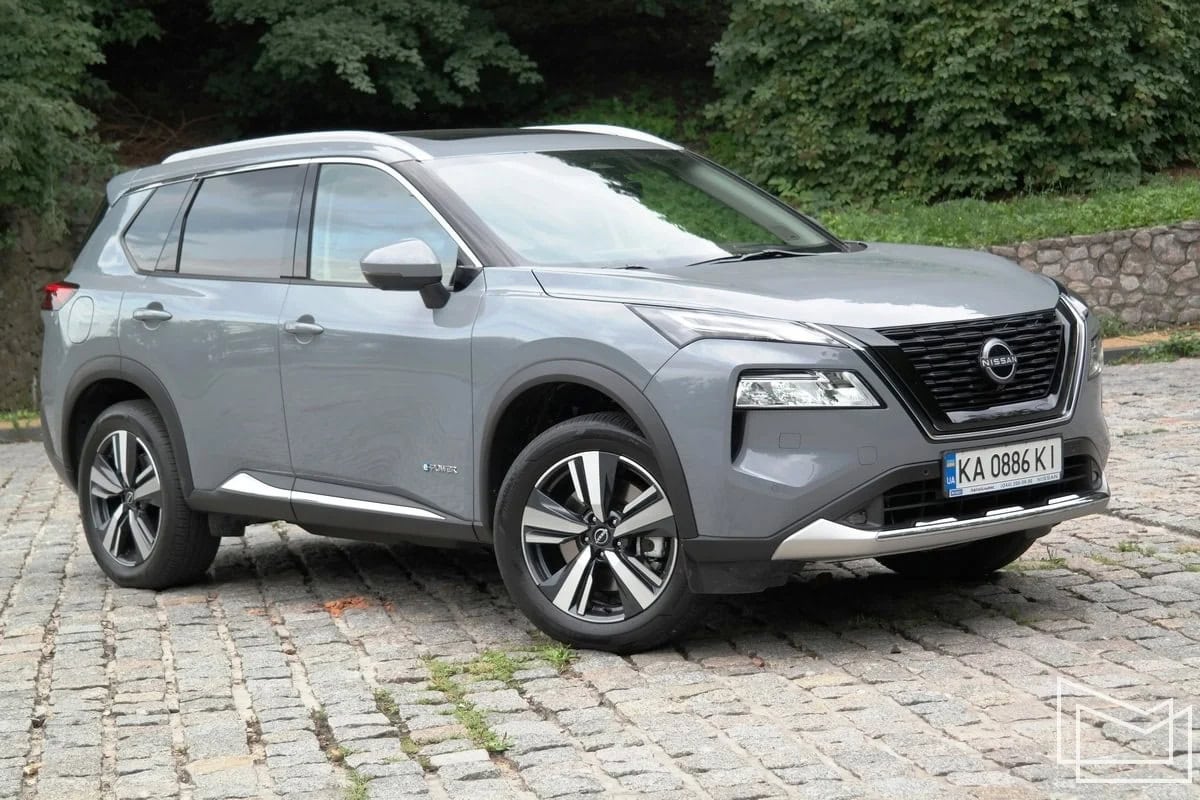These are the most versatile cars: daily trips from home to office to school, long journeys with a large family, you can drive on asphalt or go off-road, and there is a wide range of safety and comfort systems. These mid-sized cars of the D-SUV class do not impress with radical innovations, but they try to be a universal answer to the most popular questions. Which of them does it best?
Five cars for comparison
The launch of the new Nissan X-Trail in Ukraine about a year ago was symbolic not only for this model, but also for the next cycle of renewal of class rivals. Over the course of the year, new generations of Honda CR-V and Mitsubishi Outlander entered the Ukrainian market, the new Mazda CX-60 appeared, and the Hyundai Santa Fe recently arrived, and it became even larger, as if half a class above its competitors. However, speaking in general... All cars offer a length of 4.7-4.8 meters, spacious 5- or 7-seater interiors, engines with a capacity of about 200 hp or even more, front or all-wheel drive, and a good level of equipment. And all of them have already been on test drives and reviews by MEZHA. So we have five models for comparison:
Honda CR-V - approximate price $50-61 thousand (Test drive and review from MEZHA)
Hyundai Santa Fe - approximate price $43-63 thousand (Test drive and review from MEZHA)
Mazda CX-60 - approximate price $42-61 thousand (Test drive and review from MEZHA)
Mitsubishi Outlander - approximate price $40-44 thousand (Test drive and review from MEZHA)
Nissan X-Trail - approximate price $30-54 thousand (Test drive and review from MEZHA)
The most affordable variant of the Nissan X-Trail costs $30 thousand; the Mitsubishi crossover stays in the middle; the most expensive cars Honda, Hyundai, Mazda exceed $60 thousand.but generally speaking, all cars in optimal or almost maximum versions will cost $40-50 thousand.
Prices are as of mid-2024. The prices are for all versions of the vehicles, from the most affordable to the highest. The prices are approximate and are quoted in foreign currency due to possible strong exchange rate fluctuations, but the price benchmarks are outlined. The cars are evaluated in several key categories with scores from 1 to 5. Additionally, a photo of the winning car will be shown and a brief explanation will be provided for each point.
Equipment and price of the car
The Nissan X-Trail wins in this competition. And it wins by a large margin, but not without comment. The basic version, which attracts with its price, contains many safety systems, but lacks climate control (only air conditioning) or a rearview camera. If you want to get all this and keyless entry, heated steering wheel and seats, you need to take a higher and more expensive package. If you want a 7-seater interior, then again, you need to take the more expensive versions. If you want all-wheel drive (and this is the e-POWER e-4ORCE version, which I personally consider the best option for the Nissan X-Trail), then again, you have to pay extra. And so the initial price of the Nissan X-Trail at $30 thousand easily turns into $35-40-42 thousand or more.
The Mitsubishi Outlander and Mazda CX-60 crossovers will start at $40 thousand; however, they will also be equipped with all-wheel drive and 2.5-liter engines, as well as full digital instrument panels and climate control. The only difference is that the Mazda CX-60 even in the base offers a wide package of safety systems, and the Mitsubishi Outlander even in the base offers a 7-seater cabin.
The potentially large Hyundai Santa Fe crossover can also be a 7-seater, but there are no such cars in the Ukrainian price list. However, there are several trim levels, an atmospheric or turbocharged engine, front-wheel drive or all-wheel drive. As for me, all-wheel drive is already mandatory for a large Hyundai Santa Fe crossover, which means at least $44.5 thousand; if you add a turbo engine and better equipment, it will be about $50 thousand.
Finally, the Honda CR-V crossover: good equipment even from the start (security systems, climate control, even a leather interior), but the base version is also only with front-wheel drive - you need to pay extra for all-wheel drive. Moreover, you have to pay extra to the already high starting price tag: you can't get close to the Honda CR-V without $50 thousand. By the way, the most expensive variant of the Honda CR-V is the Plug-In-hybrid with a price of more than 2.5 million hryvnias or $60+ thousand; this car will probably be sold in piecemeal positions. Therefore, in the case of the Honda CR-V, we refer to the e:HEV hybrid hereafter.
In general:
Nissan X-Trail – 5 (the widest range of equipment, versions, and interior options)
Mazda CX-60 – 4 (only a 5-seater cabin, but there is a choice of engines and configurations)
Hyundai Santa Fe – 4 (currently only a 5-seater cabin, but there is a choice of engines and configurations)
Mitsubishi Outlander – 3 (only one engine/transmission, only two configurations, but a 7-seater interior)
Honda CR-V – 3 (expensive and only a 5-seater interior, but there is a choice of drive type, hybrid, and equipment)
The Nissan X-Trail wins this competition easily and without question. After all, when competitors offer 2-4-5 car variants, the Nissan X-Trail crossover offers 20+ configurations - and this allows each buyer to choose the best option for themselves.
Interior, interior space, trunk size
The advantage of the Hyundai Santa Fe's size is evident in the car's interior: a lot of space, an incredible feeling of spaciousness! But only for five people - there is currently no 7-seater option in the model's price list. The new Hyundai Santa Fe also lacks climate control for the rear passengers; although everything else is present: an adjustable sofa, sun shades, heating. Plus, a modern front panel with two displays, folding relaxation seats, and a large trunk.
The Nissan X-Trail and Mitsubishi Outlander are inferior in terms of overall space or originality of the front panel layout. However, they can offer a 7-seater interior, which gives maximum flexibility in terms of using the car - either more seats (even if the rear is very cramped) or a larger trunk. For the Mitsubishi Outlander, the exact trunk volume with a 5-seater interior configuration is not given; but I think it is similar to the Nissan.
Finally, the third group is the Honda CR-V and Mazda CX-60. Both cars offer only 5-seater interiors, both cars offer a pleasant and logically organized front panel. But then the Honda CR-V crossover comes out on top and wins in terms of practicality: better rear sofa adjustability, larger rear doors, and a better-designed trunk. The Mazda CX-60 crossover is let down by its layout with a longitudinal engine location: having the largest wheelbase of all the cars in this selection, this advantage is not felt inside at all.
In general:
Hyundai Santa Fe – 4 (wheelbase 2.815 meters, trunk 725 liters)
Nissan X-Trail – 4 (wheelbase 2.705 meters, trunk 485-585 liters)
Mitsubishi Outlander – 4 (wheelbase 2.706 meters)
Honda CR-V – 3 (wheelbase 2.7 meters, trunk 587 liters)
Mazda CX-60 – 2 (wheelbase 2.87 meters, trunk 570 liters)
I will call the winner the Hyundai Santa Fe and post its photo, but I won't give it the maximum score for the lack of rear climate control and a real 7-seater cabin. All this is available in a pair of Nissan X-Trail and Mitsubishi Outlander, so they will get similar points, although they are inferior in terms of interior space in general.
Road behavior, comfort and handling
An important clarification: here I am evaluating not so much the comfort or dynamism of the car as the consistency of its overall character. And that's why the winner is the Hyundai Santa Fe crossover: excellent turbo engine thrust, easy and logical dynamics control, quick gearshift, light steering wheel, and pleasant suspension comfort. The Hyundai Santa Fe doesn't promise any driving hints at all, but it does promise comfort - and it keeps that promise.
Mazda usually tells the story of an exciting drive, but here is the opposite example: there are promises, but no perfect execution. The turbo engine doesn't provide enough traction and sound at low revs, it wakes up only at medium-high revs; the steering wheel requires you to literally wind yourself around it, and the rear suspension sometimes allows unpleasant swaying - with little compensation in the form of comfort. The Mazda CX-60's driving character is strange; especially if you take into account the much better result of the Mazda CX-90, which is based on a similar platform. However, the Mazda CX-60 saves the day in 0-100 km/h acceleration: it is the only car in the selection to break the 7-second mark.
The other three cars are also not impressive in terms of driving performance. However, the Honda CR-V is the best at maintaining the "overall even level of everything": a hybrid that is pleasant to accelerate and smooth to operate, normal steering response, and average suspension comfort, which at least does not shake or sway every now and then. Because the Nissan X-Trail and Mitsubishi Outlander can be shaky and swaying on bad roads. One gets the impression that these two cars were made to be quite comfortable (especially the Mitsubishi Outlander); however, the Hyundai Santa Fe did not achieve the comfort and precision of the suspension, and it already got considerable rolls and periodic unpleasant jolts. However, it is necessary to mention the important trump card of the Nissan X-Trail in the form of its e-POWER e-4ORCE hybrid system, which provides high power and excellent acceleration dynamics - with an indicator of 0-100 km/h in 7.2-7.3 seconds, this is the second result in the selection. The Mitsubishi Outlander crossover can only offer smooth engine and variator responses, but this is not enough to compete with such sophisticated competitors.
In general:
Hyundai Santa Fe – 5 (good engine traction, fast "robot", comfortable suspension)
Mazda CX-60 – 4 (would be 3 points here, but +1 point for dynamics)
Honda CR-V – 3 (good hybrid, medium suspension)
Nissan X-Trail – 2 (would be 1 point here, but +1 point for hybrid and dynamics)
Mitsubishi Outlander – 1 (weak dynamics and a strange suspension, but I note the smoothness of the engine and variator)
I'm going to post a photo of the winning car again, the Hyundai Santa Fe, but this time it got the maximum score: it's well deserved!
All-wheel drive, off-road capabilities
Perhaps unexpectedly, but the victory goes to Mitsubishi Outlander: this car in Ukraine is always offered with all-wheel drive (which is automatically +1 point), the ground clearance exceeds 20 cm, and there are several driving modes for off-road. Potentially, only the variator can cause issues, but this transmission has been used on Mitsubishi Outlander for several generations in a row and as long as the manufacturer does not abandon it, there are probably no critical comments.
The related Nissan X-Trail is somewhat inferior: the basic versions of the car have front-wheel drive, the ground clearance depends on the chosen modification and even the number of seats in the cabin. Although there are also several off-road modes, and all-wheel drive is implemented by separate electric motors - forget about overheating of the variator, automatic, friction clutch when towing. The Honda CR-V crossover is in a similar position: front or all-wheel drive (but everything is implemented through a classic driveshaft), an additional mode for snow/slippery roads, a ground clearance of 19 cm; plus I note 18-inch wheels and chubby wheels - definitely not superfluous on the road.
The last group includes the Mazda CX-60 and Hyundai Santa Fe: considerable dimensions, large wheelbases, and body overhangs. Thankfully, the Mazda CX-60 crossover immediately offers all-wheel drive (which is automatically +1 point), and its 8-speed classic automatic potentially makes you feel more confident off-road when you're sliding. The Hyundai Santa Fe crossover can only respond with an extended list of off-road driving modes. But in other points, there are many comments: low ground clearance and high rear overhang; the basic version is only with front-wheel drive; all-wheel drive is available with a classic automatic and an automatic engine, but the latter may lack power for such a large and heavy car; if you take a turbo engine, there will be a "robot box".
In general:
Mitsubishi Outlander – 5 (always all-wheel drive, ground clearance 20.5-21 cm)
Nissan X-Trail – 3 (front or all-wheel drive, ground clearance 19-21 cm)
Honda CR-V – 3 (front or all-wheel drive, ground clearance 19 cm)
Mazda CX-60 – 3 (all-wheel drive, ground clearance 17.5-18 cm)
Hyundai Santa Fe – 2 (front or all-wheel drive, ground clearance of about 17 cm)
It's simple: high ground clearance and relatively small overhangs, always all-wheel drive, several driving modes for off-road - that's the victory of the Mitsubishi Outlander.
Fuel consumption, warranty, liquidity
In general, all the cars in this selection are well-known brands with a good reputation. Therefore, it will be quite easy to sell them on the secondary market - everything is fine with liquidity. The only thing worth noting is the warranty: almost all cars have a three-year or 100,000 km warranty. However, the Nissan X-Trail and Honda CR-V crossovers offer a 5-year warranty on hybrid system components; Hyundai Santa Fe can also offer a 5-year warranty, so each of them gets an additional +1 point.
And then everything is determined by fuel consumption. Of course, hybrids win here: I would especially like to mention the Honda CR-V (all versions of the car with a hybrid powertrain), and I would also like to mention the Nissan X-Trail (in the e-POWER version). I'd also like to draw attention to the result of the Mazda CX-60: the large 3.3-liter 6-cylinder turbo engine turns out to be quite economical - the result is on par with the Mitsubishi Outlander with an atmospheric 4-cylinder engine and better than the 4-cylinder "turbo" Hyundai Santa Fe. However, the latter is saved by an extended warranty.
In general:
Honda CR-V – 5 (6-7 liters in the city; 5.5-6 liters on the highway; +1 point for the warranty)
Nissan X-Trail – 5 (6-6.5 liters in the city; 6-6.5 liters on the highway; +1 point for the warranty)
Mazda CX-60 – 3 (in the city 10.5-11 liters; on the highway 6.5 liters)
Mitsubishi Outlander – 3 (in the city 10-11 liters; on the highway 6.5 liters)
Hyundai Santa Fe – 2 (12 liters in the city; 7-7.5 liters on the highway; +1 point for the warranty)
The fuel consumption figures are based on real test drives of these cars, which were published earlier. The best results are for the hybrid crossovers Honda CR-V and Nissan X-Trail, which are very close to each other; plus extra points for the extended warranty. Despite one photo, we can assume that there are two winners at once.
Conclusions and thoughts afterwards
We summarize the results in two categories at once. The "absolute" score is the best result in terms of points without taking into account the price, it is the best car in this comparison. The "bargain purchase" score is the ratio between the price and the number of points scored, which is the most logically correct option for purchase.
The score is "absolute":
Nissan X-Trail – 19 points
Hyundai Santa Fe – 17 points
Honda CR-V – 17 points
Mazda CX-60 – 16 points
Mitsubishi Outlander – 16 points
Credit for "bargain purchase":
Nissan X-Trail – price $1.6-2.8 thousand per 1 point
Mitsubishi Outlander – price $2.5-2.75 thousand per 1 point
Hyundai Santa Fe – price $2.5-3.7 thousand per 1 point
Mazda CX-60 – price $2.6-3.8 thousand per 1 point
Honda CR-V – price $2.9-3.6 thousand per 1 point
The Nissan X-Trail crossover wins a double victory - both in absolute terms and at the price of one point; the low initial cost of the car helps. However, even with a mid-range version, rather than the basic one for $35-38-40 thousand, the new Nissan X-Trail will still be the most profitable and rational choice in terms of price and points. But the most emotional choice would be the Hyundai Santa Fe: as for me, this car leaves the most pleasant impressions in the selection. If you add a 7-seater interior and an economical hybrid, it can add a few points and then come even closer to winning over Nissan.
The Honda CR-V crossover was also a very close pursuer: good equipment, a fairly spacious interior, a great hybrid, and a normal chassis setup; all that remains is to wish for a lower price tag. For example, at the level of the Mitsubishi Outlander, this car scores few points, but it also offers them at a low price (as compared to today's realities). In terms of emotional impressions and a separate test drive, this car is not impressive; but in terms of price position in the market and emphasis on rationality, as you can see, it turns out to be fine. Finally, there's the Mazda CX-60 crossover, which should emphasize the emotional component: a powerful turbo engine, excellent dynamics. However, it seems to me that the most justified and balanced in terms of price are the basic-medium 4-cylinder versions of the car. And if you have $60+ thousand for a large crossover with a large engine, then I advise you to look towards the Mazda CX-90. But let's leave such cars for some other conversation: wait for new buyer's guides - and they will be!


